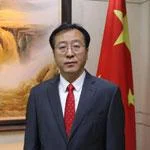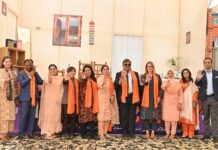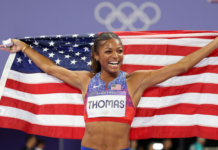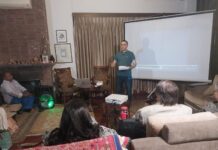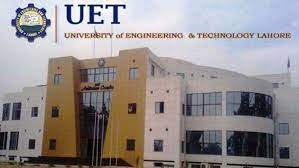Some months before our graduation, we heard rumours about an official list of students who had allegedly turned in fake degrees for their admission. And soon enough, a Punjab Police team descended upon the university to apprehend the culprits. As it happened, my roll-number was on the list, although the name against it was not mine. It was obviously an error, but I needed to get my good name (or roll number) cleared; and so, I decided to pay the Admin Block a visit.
The police officials temporary stationed there were cooperation personified. They told me to make myself at home and offered me a cup of tea. I remember thinking that my experience was so at odds with the popular perception about the Punjab Police being a bunch of heartless monsters. When I expressed these feelings (minus the ‘heartless-monsters’ bit, of course), one officer candidly told me that they were there to arrest all the fraudsters; and they had extended hospitality to me so that they did not need to search for me in case I turned out to be on the list after all. This honesty too was a breath of fresh air.
In the nineties there used to be much excitement about CAD, although of course we did a lot of manual drawing as well. In an oral examination, the examiner had asked a student to enumerate from his experience the respective pros and cons of the on-screen CAD and the traditional, manual technique with large drawing sheets, T-squares and all. The examiner had noticed a turmeric stain on the A1 sized sheet the student had brought along for the ‘viva’, and had put two and two together. When the student was done comparing the two experiences, the examiner calmly pointed out that he had forgotten to mention a key merit of traditional drawing sheets: namely, their utility as a makeshift tablecloth.
When the deadlines for graphics and production engineering ‘sheets’ approached, it was time for the time-honoured all-night sessions in the hostels. These all-nighters invariably featured the standard tracing mechanism – glass panel, table lamp and stacks of books. Javed (of Bhatti Group) was of the view that tracing was beneath the dignity of a self-respecting engineer-to-be. He came up with a novel and, in his view, respectable alternative that retained the traditional technique’s vital feature of not requiring the use of one’s head. This technique involved reproducing on one’s sheet lines and curves after measuring lengths and angles from a completed drawing. Javed coined the term ‘naap-ing’ (what a delightful hybrid!) to differentiate it from mere tracing. In case you are wondering, Javed went on to found a manufacturing concern, which he still runs successfully. If he ever found reading of mechanical drawings difficult, he has not let anybody in on the secret.
The cut-throat competition for entry into UET being what it was, only the most brilliant were able to get in. Until 1997’s clean-up operation however, the prevailing atmosphere, which was so thoroughly permeated by indiscipline and politics of the worst sort, saw to it that many students got distracted and lost their way, at least for a while.
When the deadlines for graphics and production engineering ‘sheets’ approached, it was time for the time-honoured all-night sessions in the hostels. These all-nighters invariably featured the standard tracing mechanism – glass panel, table lamp and stacks of books
Many instructors had unfortunately also given up as futile their resolve to achieve and maintain excellence. Whether they had gauged the commitment (or lack thereof) of their students, or it was a convenient cop-out – probably it was a combination – many instructors were content to set extremely predictable questions in examinations; some going to the extent of placing at the photocopy shops ‘problem sheets’ covering the range of question types likely to feature in the exam. It was the pre-semester-system era, and examinees had a ‘choice’ of attempting five out of eight questions. All this meant that students needed to cover a very small portion of the syllabus. Of course, even this was deemed too much by many students.
Of course, once the students got set in their ways, any instructor who tried to swim against the tide (as many did) more often than not found his attempts thwarted by the inertia of the system. But there were those who were an absolute credit to their profession, despite these odds. The most exhilarating lectures were, without doubt, Dr Riaz Miza’s, who sadly passed away some months ago. The dreaded PowerPoint had thankfully not yet made it to the classrooms, but such was his grip on internal combustion engines that he did not bother to consult any notes either. There was no apparent structure to his lecture, as he appeared to jump abruptly from one topic to another. The same could be said of his course overall, although the discerning eye could detect vague outlines of a method behind all the madness. I have since seen many an instructor trying similarly unstructured approaches, which have almost always been disastrous because the instructor so obviously lacked Dr Mirza’s gifts.
Outside the classroom Dr Mirza had a lot to say on, among other topics, the institution of marriage. With one or two notable exceptions, we were all bachelors and therefore could do with that education. However, few of us made use of his advice. I am sure all of us truly appreciated his wisdom after it was too late.
Then there was Dr Dilshad, the Dean. If there was a class as absorbing as Dr Mirza’s, it was his, although being an exponent of structured teaching he was the absolute antithesis of Dr Mirza. To this day, I have yet to know of a textbook or a lecture that covers solid mechanics, especially energy methods, quite like he did.
Memories of UET are incomplete without its many messes and canteens. Come lunch time, Bhola Canteen was the place to be. Especially notable was its ‘Chinese’ rice with provision for a refill, affectionately referred to as the ‘suppli’. There was absolutely nothing ‘Chinese’ about it, but it was the best ‘Chinese’ rice in town, or so it seemed in those days.
The rich night life at the UET revolved around the hostel canteens. Thanks to these establishments, the hostel outdoors used to be bustling with activity even in cold winter nights. The highlight of the late-night menu was the aalu-waala-paraatha and fried egg combo. I think this deadly combination was pioneered at the UET.
Most students barely made it to the morning class in time, and so they could do with tea and breakfast. And sure enough, canteens were strategically located in close vicinity to the central Lecture Theatres where many of the classes were held. There was therefore a constant stream of students entering and leaving the class while the lecture raged on. To their credit, the instructors rarely objected to the traffic.
One hears that UET Lahore is unrecognisable from what it used to be in those heady days in the nineties: much more organized, disciplined and, I dare say, unexciting. This is good news, all things considered. May its scholars continue to live in uninteresting times!





